-
pytorch双线性插值
1、单线性插值
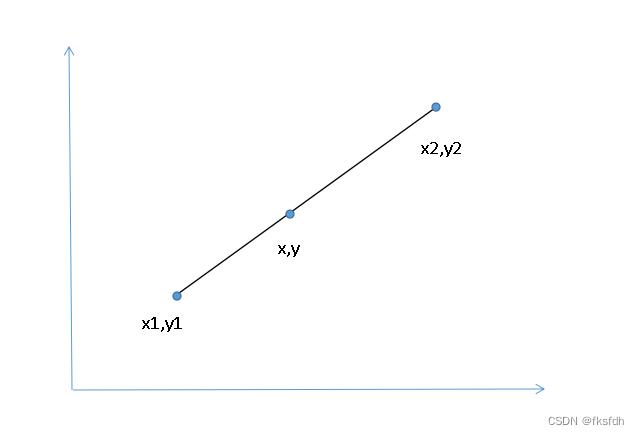
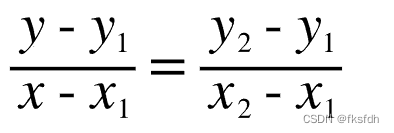
化简得:
重要公式

将y视为像素值的函数;
2、双线性插值
问题:求P点的像素值?
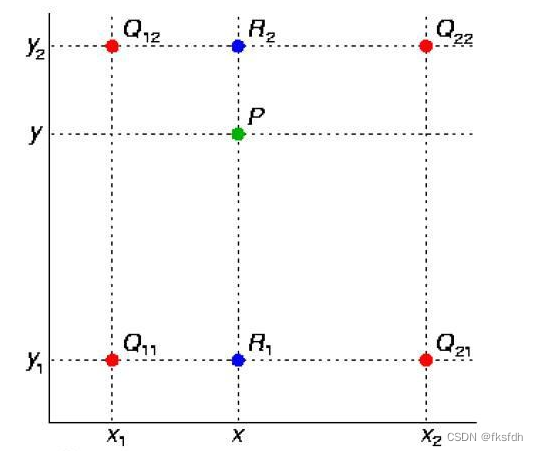
根据单线性插值公式:
1、得到R1和R2点的像素值:

2、然后通过R1和R2线性插值得到P点的像素值:

所以,一共使用了三次单线性插值得到,最终的像素值。
另外,其中由于相邻像素点差1,所以y2 - y1 = 1 ,和x2-x1 = 1,所以分母就为1.
最终得到的计算公式为:



3、最近邻法
使用下面公式,寻找最近一个像素值

其中:
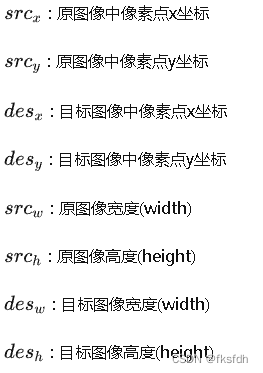
存在问题:右偏移
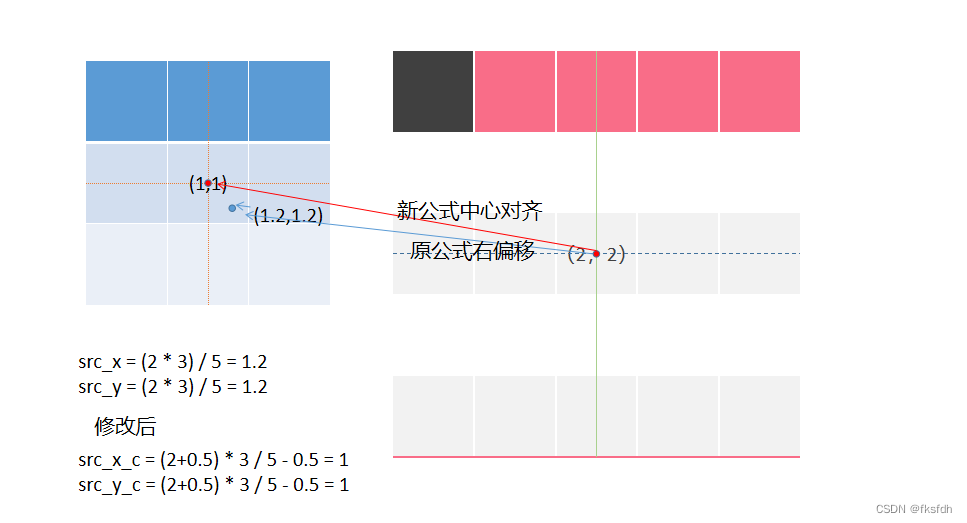
原公式是右偏移的,新公式中心对其了。因为在原公式中是右偏移的,所以使用中心点重合来消除一下。
下面是优化公式:

4、双线性插值简单实现
通过最邻近找到P点,然后需要找到出四个相邻像素点。
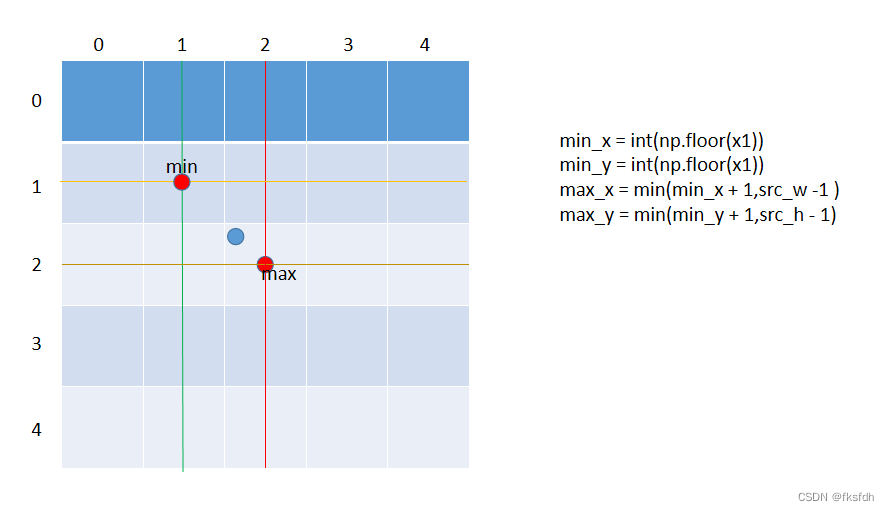
通过floor函数找到下限,floor +1 找到上限,但是要防止超过图像的像素坐标值import numpy as np import matplotlib.pyplot as plt from PIL import Image def Bilinear(dst,des_w,des_h,src_w,src_h): for c in range(3): for dst_x in range(des_w): for dst_y in range(des_h): src_x = (dst_x + 0.5)*src_w/des_w - 0.5 src_y = (dst_y + 0.5)*src_h/des_h - 0.5 #四个临近点 src_x_1 = int(np.floor(src_x)) src_y_1 = int(np.floor(src_y)) src_x_2 = min(src_x_1 + 1,src_w -1) src_y_2 = min(src_y_1 + 1,src_h -1) R1 = (src_x_2 - src_x) * src[src_y_1,src_x_1,c] + (src_x - src_x_1) * src[src_y_1,src_x_2,c] R2 = (src_x_2 - src_x) * src[src_y_2,src_x_1,c] + (src_x - src_x_1) * src[src_y_2,src_x_2,c] P = int((src_y_2 - src_y) * R1 + (src_y - src_y_1) * R2) dst[dst_y, dst_x, c] = P return dst def show_img(dst): dst = dst.astype(np.uint8) plt.figure() plt.subplot(121) plt.imshow(src) plt.subplot(122) plt.imshow(dst) # plt.imsave("./img.png",dst) plt.show() if __name__ == '__main__': src = Image.open("./img_1.png") src_w = src.width src_h = src.height src = np.array(src) dst = np.ones((960, 1280, 3)) des_w = dst.shape[1] des_h = dst.shape[0] # print(des_w,des_h) dst = Bilinear(dst,des_w,des_h,src_w,src_h) show_img(dst)- 1
- 2
- 3
- 4
- 5
- 6
- 7
- 8
- 9
- 10
- 11
- 12
- 13
- 14
- 15
- 16
- 17
- 18
- 19
- 20
- 21
- 22
- 23
- 24
- 25
- 26
- 27
- 28
- 29
- 30
- 31
- 32
- 33
- 34
- 35
- 36
- 37
- 38
- 39
- 40
- 41
- 42
- 43
- 44
- 45
- 46
- 47
- 48
- 49
- 50
- 51
- 52
- 53
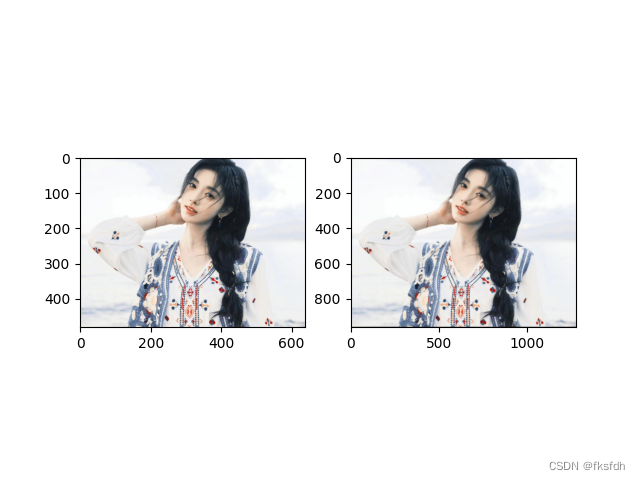
5、pytorch中双线性插值
import torch from torch.nn import functional as F from PIL import Image import numpy as np import matplotlib.pyplot as plt img = Image.open("./img.png") img = np.array(img,dtype=float) print(img.shape) img = torch.from_numpy(img) print(img.shape) img = img.unsqueeze(0).permute(0,3,1,2) #[b,c,h,w] img = F.interpolate(img,scale_factor=(2,2),mode='bilinear') # print(img.shape) img = img.squeeze(0).permute(1,2,0) print(img.shape) a = torch.tensor(img, dtype=torch.uint8) print(a.shape) plt.figure() plt.imshow(a) plt.show()- 1
- 2
- 3
- 4
- 5
- 6
- 7
- 8
- 9
- 10
- 11
- 12
- 13
- 14
- 15
- 16
- 17
- 18
- 19
- 20
- 21
- 22
- 23
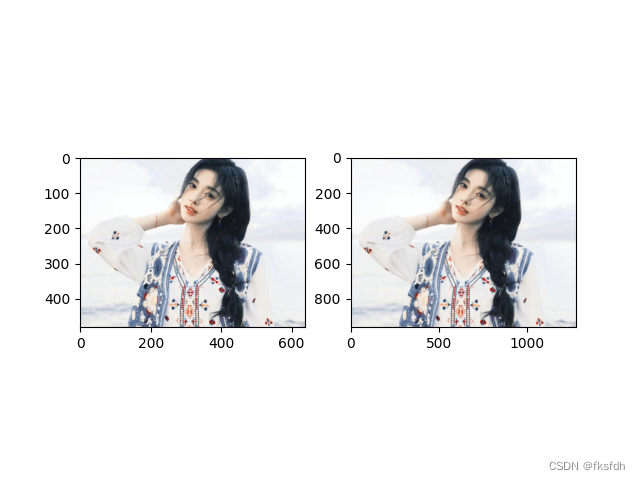
-
相关阅读:
Jmeter--简单的快捷键设置
树状数组-
[Python进阶] 可视化打包程序:auto-py-to-exe
SpringBoot对于SpringMVC的支持
docker 安装rabbitmq
synchronized关键字的作用
NH2-PEG-MAL 氨基PEG马来酰亚胺
Retrofit面试题系列
DDD--战略设计和战术设计
【Java SE】第三话·数据类型与变量
- 原文地址:https://blog.csdn.net/fksfdh/article/details/126068390
